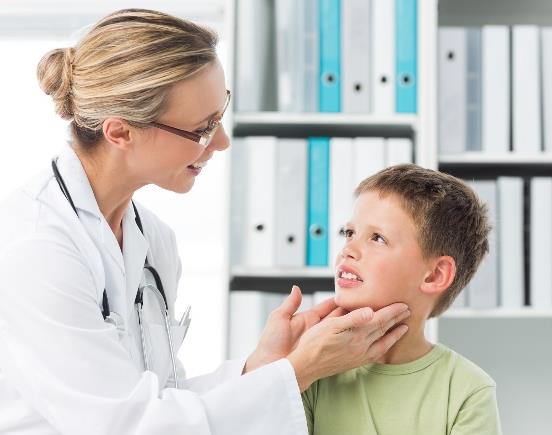Tennessee Uses Syndromic Surveillance to Identify Potential Cases of Mumps

The Tennessee Department of Health uses an enhanced surveillance approach that integrates traditional surveillance methods with near real-time surveillance to detect reportable diseases and conditions of immediate public health interest. When syndromic data are used as part of a comprehensive surveillance system, health incidents can be detected so that a response can be initiated quickly. Syndromic data can also signal potential reporting irregularities or opportunities to initiate follow-up investigation and process improvements.
In one instance, a patient was seen in the hospital emergency department (ED) and diagnosed with mumps based on clinical symptoms. No laboratory tests were ordered, and the patient was discharged. However, the combination of testicular swelling and jaw swelling was highly suggestive of a true case of mumps. Only 2 days later, syndromic surveillance detected and flagged this ED visit. An investigation was launched, the patient was interviewed, and specimens were collected on the same day as the notification—a fast response time made possible by syndromic surveillance. Because of public health’s intervention, the patient was confirmed to be a true case of mumps. Close contacts were assessed, and multiple states were notified of the dates and locations of potential exposures in their respective health jurisdictions.
Tennessee’s comprehensive surveillance approach is assisting hospitals and protecting the public’s health. When syndromic data are used as part of a comprehensive surveillance system, public health can act more quickly. Funding from the National Syndromic Surveillance Program supports the use of syndromic surveillance in improving the nation’s public health.
Public Health Problem
Sometimes incidents of public health importance are not readily detected and initially go unreported using traditional surveillance systems. Occasionally these incidents are detected after the fact. Every missed case, however, is a lost opportunity to understand disease trends and identify potential outbreaks in near-real time. When syndromic data are used as part of a comprehensive surveillance system, these incidents can be detected before becoming missed opportunities.
Actions Taken

Tennessee Uses Syndromic Surveillance to Protect the Public’s Health
Emergency department data
Basic patient demographics
Discharge diagnoses
• Chief complaint at registration
• Medical record numbers
• Patient ZIP code
• County
- Age, sex, race, ethnicity, etc.
More than 80 hospitals in Tennessee protect public health by contributing data to CDC’s National Syndromic Surveillance Program.
The Tennessee Department of Health routinely monitors syndromic data for keywords and ICD10 codes related to reportable diseases and conditions of immediate public health interest—such as measles, mumps, and rubella. The value added by this surveillance activity is readily apparent in two mumps-related events:
A patient was seen at a Tennessee hospital emergency department (ED) with a chief complaint of “R testicle swollen x 2 days with R jaw swelling x 1 day” and a discharge diagnosis ICD10 code of B26.9 (mumps without complication). Only 2 days later, syndromic surveillance detected and flagged this ED visit. Public health mobilized quickly. The local epidemiologist contacted the hospital infection preventionist, who was unaware of the ED visit, and then the infection preventionist immediately launched an investigation.The patient had been seen in the hospital ED and diagnosed with mumps solely based on clinical symptoms. No laboratory tests were ordered, and the patient was discharged. However, the combination of testicular swelling and jaw swelling was highly suggestive of a true case of mumps. The infection preventionist provided the patient’s contact information, which public health acted on immediately. The patient was contacted, interviewed, and found to be in the last 24 hours of the window for confirmatory laboratory testing. Specimens were collected—on the same day as the notification—a fast response time made possible by syndromic surveillance.The interview also revealed that the patient had traveled with a group that visited multiple states during the patient’s infectious period. Because of public health’s intervention, the patient was confirmed to be a true case of mumps. Close contacts were assessed, and multiple states were notified of the dates and locations of potential exposures in their respective health jurisdictions. No secondary cases in Tennessee were identified.
In another part of Tennessee, a local epidemiologist discovered a chief complaint of “diagnosed Monday with mumps” during a routine review of syndromic data. The epidemiologist immediately contacted the infection preventionist at the hospital who explained that the pediatric patient had been diagnosed at an affiliated clinic. No one at the clinic had conducted laboratory tests to confirm the diagnosis or followed hospital protocol by notifying the infection prevention team. Given the patient’s vaccination history (two doses of the measles, mumps, rubella [MMR] vaccine) and lack of known exposure to another mumps case, the earlier diagnosis of mumps seemed epidemiologically unlikely.
Later that day, a concerned citizen called the local health department about a sign posted at a YMCA stating that a mumps exposure had occurred. At that time, there were no known cases of mumps in Tennessee, and the only active investigation was the ED visit detected through syndromic surveillance. Rapid follow-up with the patient’s parents confirmed that the current investigation and YMCA exposure announcement involved the same patient. Local public health officials contacted the YMCA, provided some health education, and advised that the exposure signs be removed. By using syndromic surveillance data, public health officials rapidly connected the dots between the two incidents and remedied misinformation in the community.
Outcome
Enhanced surveillance of reportable conditions benefits public health. Syndromic data provide opportunities for health practitioners to initiate conversations with partnering hospitals; “fill in the blanks” by comparing reportable disease data with syndromic surveillance findings; and mobilize resources to respond appropriately and quickly. Tennessee’s comprehensive surveillance approach is assisting hospitals and protecting the public’s health.
Lessons Learned
- Use syndromic surveillance data to initiate conversations with hospital partners. Syndromic data are fast—not final—and can signal potential reporting irregularities or opportunities to initiate a follow-up investigation. Regular review of data and follow-up are essential.
The Tennessee Department of Health uses syndromic data to provide estimates, capture preliminary information, and identify potential unreported cases of urgent conditions so that a response can be quickly initiated and process improvements can be implemented. They also use specialized queries to detect outbreaks and events that pose potential health threats. This enhanced surveillance approach integrates traditional reporting methods with near real-time surveillance. The timely, intermittent communications that result can help hospital partners reinforce protocols for atypical events.
- Use the near real-time nature of syndromic surveillance to improve community health and public health response. Be proactive. The immediacy of syndromic data provides frequent opportunities for public health to strengthen relationships with hospitals and positively influence outcomes.
- Make sure the benefits to public health justify the use of enhanced surveillance methods. Target conditions that have a short post-exposure window for treatment, laboratory testing, or other intervention.
Contacts
Emergency Preparedness Program
Tennessee Department of Health
caleb.wiedeman@tn.gov
Office of Public Health Data, Surveillance, and Technology
Division of Health Informatics and Surveillance
www.cdc.gov/nssp
This success story shows how NSSP
- Improves Data Representativeness
- Improves Data Quality, Timeliness, and Use
- Strengthens Syndromic Surveillance Practice
- Informs Public Health Action or Response
The findings and outcomes described in this syndromic success story are those of the authors and do not necessarily represent the official position of the National Syndromic Surveillance Program or the Centers for Disease Control and Prevention.
